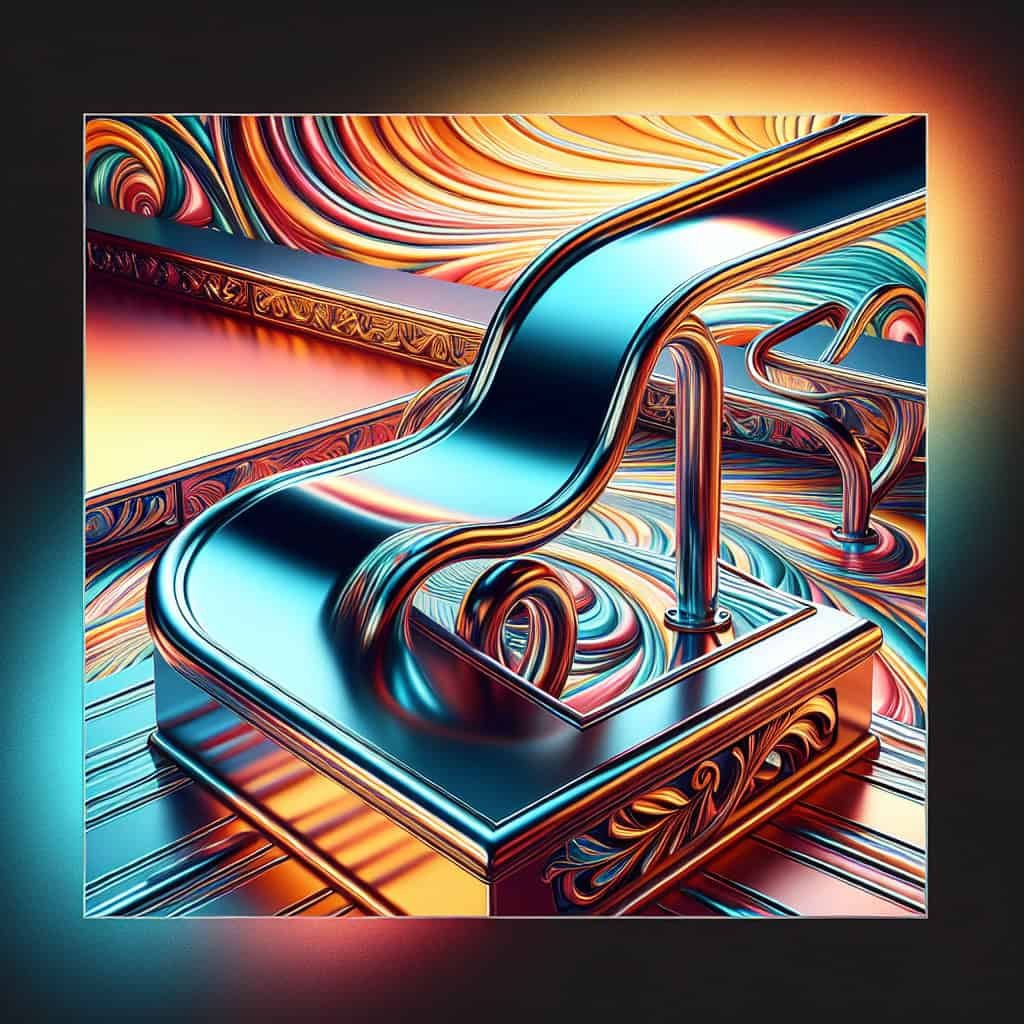Are you an aspiring skateboarder looking to improve your skills? In this article, we will explore the various options available to you when it comes to skateboard ramps, rails, and obstacles for practice. Whether you’re a beginner looking for a simple ramp to perfect your ollies or an experienced skater in search of challenging obstacles, we’ve got you covered. From mini ramps and grind rails to DIY obstacles, we will discuss the different choices you have to create your very own skate park and take your skateboarding skills to the next level. So, let’s jump right in and discover the exciting world of skateboard practice options! Skateboarding is an exhilarating and dynamic sport that requires practice and dedication to master. Whether you’re a beginner looking to improve your skills or an experienced skateboarder looking for new challenges, having the right equipment is essential. In this comprehensive article, we will explore the various types of skateboard ramps, rails, and obstacles that are available for practice, so you can choose the ones that best suit your needs and level of expertise.
Skateboard Ramps
Skateboard ramps are essential for performing tricks and maneuvers, providing skaters with the opportunity to gain speed, catch air, and showcase their skills. There are several types of skateboard ramps available, each catering to different riding styles and skill levels.
Mini Ramps
Mini ramps are perfect for beginners or skaters who prefer a smaller setup. These ramps typically have a gentle slope and are often portable, making them ideal for practicing basic tricks and maneuvers. Mini ramps are great for honing your balance, developing transitions, and gaining confidence on your skateboard.
Quarter Pipes
Quarter pipes are a staple in skateboard parks and are versatile ramps that allow skaters to perform a wide range of tricks. They consist of a curved ramp that resembles a quarter of a pipe, hence the name. Quarter pipes are excellent for learning airs, grinds, and transitions, as they provide a smooth trajectory that allows skaters to catch air and land safely.
Vert Ramps
Vert ramps, also known as vertical ramps, are the choice for adrenaline-seeking skateboarders looking to perform high-flying tricks. These ramps feature a steep incline and a vertical transition, offering skaters the opportunity to launch themselves into the air at impressive heights. Vert ramps require advanced skills and are commonly found in professional skateboarding events and skate parks dedicated to vertical skateboarding.
Half Pipes
Half pipes are perhaps the most iconic and popular type of skateboard ramp. They consist of two symmetrical ramps facing each other, connected by a flat bottom. Half pipes allow skaters to perform a variety of tricks, combining transitions and flips for an exhilarating experience. They are suitable for all skill levels, as they provide a balance between speed, height, and technicality.
Bank Ramps
Bank ramps, also known as banks or wedge ramps, have a gentle incline that resembles a slope or a hill. These ramps are primarily used for gaining speed, cruising, and performing basic tricks. Bank ramps are an excellent choice for beginners who are just starting to explore skateboarding and want to get comfortable riding on different surfaces.

Skateboard Rails
Skateboard rails are essential for skaters who are interested in perfecting their grinding skills. They provide a surface for skaters to slide along, whether it be on the edge of a rail or the top of a flat surface. Rails come in various shapes and sizes, each offering a different experience and challenge.
Flat Rails
Flat rails are the most basic type of rail and are commonly used for learning and practicing grinding tricks. They consist of a long, flat bar made of metal or PVC and are often adjustable to accommodate different heights and angles. Flat rails are perfect for beginners or skaters who are new to grinding, allowing them to develop their balance, coordination, and control.
Round Rails
Round rails, as the name suggests, feature a curved shape and provide a different challenge compared to flat rails. Skaters who have mastered grinding on flat rails often seek round rails to test their skills further. The curved surface requires precise balance and technique to maintain stability and execute tricks successfully.
Adjustable Rails
Adjustable rails are a versatile option for skaters who want to experiment with different heights and angles. These rails typically have a modular design, allowing them to be adjusted or combined to create various configurations. Adjustable rails offer skaters the opportunity to customize their practice experience and challenge themselves with different setups.
Square Rails
Square rails provide a unique grind experience, featuring a flat surface on top and a square or rectangular shape. Skaters who enjoy technical grinding tricks often prefer square rails as they require precision and control to execute tricks flawlessly. Square rails come in different lengths and heights, catering to skaters of all levels.

Skateboard Obstacles
Skateboard obstacles are an essential part of any skate park or practice area. They simulate real-world environments and replicate the challenges skaters encounter in urban settings. From ledges to stair sets, these obstacles allow skaters to showcase their creativity and adaptability while honing their technical skills.
Manual Pads
Manual pads are low, flat surfaces resembling curbs or ledges. They are perfect for practicing manuals, a skateboarding trick where skaters balance on two wheels while riding on their back or front wheels. Manual pads allow skaters to refine their balance, coordination, and control over their skateboard.
Ledges
Ledges are elevated surfaces with a narrow edge on which skaters can perform a variety of tricks. They mimic the edges of curbs, benches, or stair edges found in urban environments. Ledges are ideal for practicing grinds, slides, and flip tricks, providing skaters with the opportunity to perfect their technical skills.
Stair Sets
Stair sets simulate the stairs found in parks, buildings, or public spaces. They consist of a series of steps that skaters can use as a ramp or obstacle to perform tricks. Stair sets are popular among more experienced skaters who enjoy the challenge of clearing multiple steps while incorporating flips, rotations, or grinds into their tricks.
Pyramids
Pyramids are large, pyramid-shaped obstacles that offer skaters a wide range of possibilities. They usually consist of multiple surfaces, including ramps, ledges, and rails, allowing skaters to combine tricks and transitions creatively. Pyramids provide an opportunity for skaters to showcase their versatility and flow in combining various skateboarding elements.
Kickers
Kickers are inclined ramps that send skaters flying into the air. They are perfect for launching into tricks, jumps, and aerial maneuvers. Kickers come in various sizes and angles, allowing skaters to experiment with different heights and distances. They are great for practicing grabs, spins, and flips, enabling skaters to unlock their aerial potential.
Spines
Spines are obstacles that consist of two quarter pipes facing each other and joined by a narrow spine in the middle. They offer skaters the opportunity to transfer from one side to the other, combining transitions and tricks seamlessly. Spines are commonly found in skate parks and provide an exciting challenge for skaters who enjoy technical tricks and continuous flow.
Wedges
Wedges, also known as launch ramps or kickers, are inclined ramps that resemble a small, narrow pyramid. They are perfect for gaining speed, catching air, and launching into tricks. Wedges are highly versatile and can be used for practicing jumps, flip tricks, and transitions, adding an extra element of excitement to your skateboarding sessions.
Rails and Boxes
Rails and boxes are common obstacles in skateboarding that allow skaters to combine grinds, slides, and tricks. Rails are usually long, narrow bars or pipes that skaters can grind or slide along, similar to skateboard rails. Boxes, on the other hand, consist of a flat surface and multiple edges, providing skaters with endless possibilities for creative line combinations.
In conclusion, skateboard ramps, rails, and obstacles offer skaters a diverse range of options to enhance their skills and push their limits. Whether you’re a beginner looking to develop the fundamentals or an experienced skateboarder seeking new challenges, choosing the right equipment is crucial. Consider your skill level, riding style, and personal preferences to select the ramps, rails, and obstacles that will provide you with the most enjoyable and rewarding skateboarding experience. So, grab your skateboard and start exploring the thrilling world of skateboarding ramps, rails, and obstacles, and watch as your skills soar to new heights!


